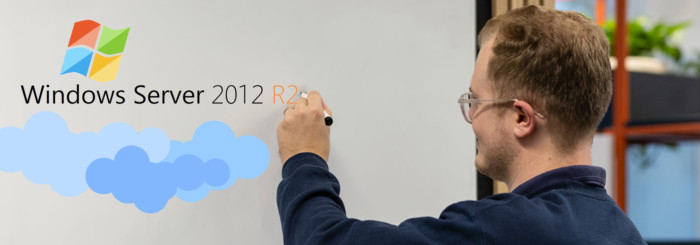Microsoft Windows Server 2012 R2 end of life – Are you ready?

Technology is an ever-evolving landscape, nowadays businesses rely heavily on robust and secure IT infrastructures, and for many, there is a server at the heart of the business. So, it is crucial to stay in the loop of the lifecycles of the operating systems (OS) which power them. One OS which is soon reaching end of life is the widely adopted and trusted Microsoft Windows Server 2012 R2.
What is Windows Server 2012 R2?
Windows Server 2012 R2 was released on November 25th 2013, offering enhanced features and improvements, for years it has served as the backbone of many businesses, delivering reliability, scalability and flexibility to support applications and workloads, however, nearly 10 years have passed since and all good things must end. But what does this mean for users?
What is Microsoft Windows Server 2012 R2 end of life?
Each Microsoft product has a lifecycle which is usually around 10 years. This lifecycle is predetermined to allow users plenty of time to prepare for the change.
During this time, Microsoft develops the product, improving the technology and advancing the functionality.
Microsoft’s lifecycle Includes two significant milestones: mainstream end of life and extended end of life.
The mainstream end date signals the end of feature updates and the start of limited support.
Whilst the extended end date is where Microsoft cease to provide security updates, non-security updates, bug fixes, technical support or online technical content updates. This gives way for support for the new product.
So, once the product reaches extended end of life, all support for the product ceases.
When is Microsoft Windows Server 2012 R2 reaching end of life?
The mainstream end date for Windows Server 2012 R2 actually arrived on October 9th, 2018!
So, now, we approach the extended end date, with Microsoft Windows Server 2012 R2 reaching End of Life on October 10th 2023, marking the final chapter for Windows Server 2012 R2.
What does this mean for your business?
With this milestone, Microsoft will no longer provide any updates, fixes, or support. So from October 10th 2023, any businesses running Windows Server 2012 R2 will be vulnerable to cybercrime, viruses, and compliance risks, and without this line of security, you’ll be unlikely to pass Cyber Essentials.
What are your options?
When approaching a server operating system EOL, there’s two main options you can take: migrate or upgrade.
Migrate
The use of the cloud has grown rapidly the past few years, with businesses enjoying the scalability and flexibility that comes with cloud services, here at Geeks, we have our modern cloud solution: Geeks Cloud.
With the cloud, everything can be optimised for flexibility, security and speed, now and far into the future, with predictable costs and no more server OS lifecycle’s to keep an eye on!
In the office, you’ll have more space with no server in sight, instead your files will be securely stored on OneDrive and SharePoint, all available at a click of a button. Enabling a culture where anyone can work from anywhere, quickly and securely connecting to the digital assets and people they need.
Upgrade
If the cloud isn’t suitable for your business just yet, there is also the option to migrate to a newer server OS.
However, the upgrade path isn’t entirely straightforward. That’s because since Windows Server 2012 R2, Microsoft have released Windows Server 2016, Windows Server 2019, and Windows Server 2022.
With the advances made from Windows Server 2012 R2 to Windows Server 2022, there isn’t an officially supported migration path from Microsoft for it.
So, usually, you would have to either upgrade to Windows Server 2016, however the EOL is again looming with the mainstream end of life already reached (January 2022) and the extended end of life in 2027. Or you can upgrade to Windows Server 2019.
Once you have upgraded to either of these server OS’, you would then finally upgrade to the latest Windows Server OS, Windows Server 2022 and enjoy all the benefits of the most up-to-date functionality.
But don’t worry – that’s where Computer Geeks can step in! We are typically able to migrate any server to the new or newest version, even if it is unsupported by Microsoft.
Extend support
There is also the option to purchase extended security updates:
- Extended Security Update Year 1: Oct 11, 2023 – Oct 8, 2024
- Extended Security Update Year 2: Oct 9, 2024 – Oct 14, 2025
- Extended Security Update Year 3: Oct 15, 2025 – Oct 13, 2026
However, this is the last resort option for businesses using legacy Microsoft products past end of support.
Need a hand?
With the extended end of life for Windows Server 2012 R2 vastly approaching, it’s better to have a plan as soon as possible to move away.
From migration strategies to alternative solutions, we’re here to provide guidance to help customers navigate this change and ensure a smooth transition to either a modern and secure server or cloud environment.
We can take a look at your current setup and recommend the best pathway for your business to take, whether that be cloud, server or somewhere in between.





